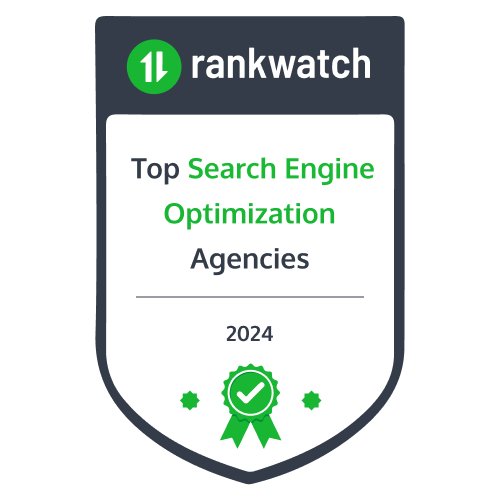You’re looking to boost your site’s ranking on Google, and a data-driven approach is your best bet. By focusing on key elements like high-quality content, strategic backlinks, and improving user experience, you can make significant improvements. It’s important to start by understanding Google’s ranking algorithms. This knowledge will guide your efforts in optimizing your site effectively. While implementing these strategies, remember to keep things simple and direct. Curious about how to tackle each element systematically? Let’s explore how these factors interact and what you can do to optimize each one for better visibility.

Understanding Google’s Ranking Algorithms
To climb Google’s rankings, you need to understand its algorithms. Focus on creating quality content, securing backlinks, and improving user experience. Also, refine your on-page and technical SEO to meet Google’s standards.
Content Quality and Relevance
Understanding how Google’s ranking algorithms work can greatly enhance your site’s visibility. To rank well, your content must be both high-quality and relevant. This means you’re an authority on the topic. Show Google you know your stuff by covering your topic thoroughly. This is called topic authority. Next, include a variety of related words and phrases in your content. This is known as semantic saturation. It helps Google see your content as all-encompassing.
According to a recent report, 72% of marketers say relevant content creation is the most effective SEO tactic.
Backlinks
Another important factor in enhancing your site’s Google ranking is the quality and quantity of backlinks. Backlinks are links from other websites to yours. They demonstrate to Google that your site is valuable and trustworthy.
Here’s how you can focus on them:
- Link Acquisition: Aim to obtain links from reputable sites. It enhances your site’s credibility.
- Anchor Text: Incorporate relevant keywords in the anchor text of backlinks. It aids Google in understanding what your page is about.
- Referral Traffic: Quality backlinks can attract more visitors. This indicates to Google that your content is deserving of a higher ranking.
Websites with a strong backlink profile are 3.8 times more likely (www.backlinko.com/hub/seo/backlinks) to achieve higher rankings on Google.
User Experience (UX)
While backlinks help establish your site’s credibility, focusing on user experience (UX) guarantees visitors stay engaged and satisfied. You need to make sure your site meets accessibility standards. This means it’s easy for everyone to use, including people with disabilities. Think about adding interactive elements that are simple to use. These can keep your visitors interested and active on your site. Also, your site’s navigation structure is vital. It should be clear and easy to follow. If visitors can’t find what they’re looking for quickly, they might leave your site. Make sure your menus are straightforward and your pages are well-organized. Good UX isn’t just about looking nice; it’s about being functional and accessible for all.
A one-second delay in page load time can lead to a 7% reduction in conversions. Improving UX, such as faster loading times and mobile-friendliness, is key for better rankings.
On-Page SEO
To enhance your site’s ranking, you must frequently focus on optimizing each page’s SEO elements according to Google’s algorithms. One key area is on-page SEO, which includes tweaking small but essential details directly on your web pages. Here are three simple steps you can take:
- Meta Tags: Confirm each page has unique and relevant meta descriptions and titles. They help Google understand what your page is about.
- Schema Markup: Implement schema markup to assist search engines interpret the content and enhance how your page is represented in search results.
- Anchor Text Optimization: Use descriptive anchor texts for your links. This not only helps with SEO but also aids users in browsing your site.
Approximately 50% of search queries are four words or longer.
Technical SEO
Image source: Pixabay
Diving into technical SEO, you’ll need to grasp how Google’s ranking algorithms work to further enhance your site’s visibility. First off, understand that Google uses these algorithms to decide which websites are most relevant to a user’s search query. You can boost your site’s chances by smartly managing your robots.txt. This file tells Google’s bots what parts of your site to crawl and what to skip. It’s important for optimizing your crawl budget, ensuring Google spends time on your most important pages. Also, integrating Schema markup can greatly help. It makes it easier for search engines to understand the content on your pages, improving how they display in search results. Keep these strategies in mind to get ahead.
About 45% of all websites have critical technical SEO errors.
Tools and Techniques for Website Ranking Analysis
Understanding where your website stands and identifying improvement areas are crucial. Here are some key tools and techniques for analyzing your website’s ranking:
Google Analytics
Google Analytics provides detailed insights into user behavior, traffic sources, and page performance. You can dive deep into how visitors interact with your site, which is essential for making data-driven decisions. Here are three key aspects you should focus on:
- Traffic Analysis: See where your visitors are coming from and what pages they’re engaging with. This helps you understand which traffic sources are most valuable.
- Conversion Goals: Set specific goals to track conversions like form submissions or product purchases. It shows you what’s working and what’s not.
- Audience Demographics: Understand who your visitors are, including details like age, gender, and location. This info can tailor your content to better suit their needs.
About 55% of companies use Google Analytics as their primary analytics tool.
Google Search Console
Moving beyond Google Analytics, Google Search Console is another essential tool for analyzing and enhancing your website’s performance in search rankings. You’ll find it invaluable for digging deep into how your site appears in search results. Start by using the performance reports to see where you stand. These reports show you which queries bring up your site in search results, how often people click on your links, and your overall visibility on Google. Utilize search filters to drill down into specific data like dates, pages, or countries. This helps you understand where you need to focus your efforts. Query analysis lets you see exactly what people are searching for when they find your site. This insight is vital for tweaking your SEO strategy effectively.
Over 90% of webmasters use Google Search Console to monitor their site’s performance in search results.
SEO Tools (Ahrefs, SEMrush, Moz)
Why not elevate your website’s ranking analysis by using specialized SEO tools like Ahrefs, SEMrush, and Moz? These tools can help you understand how your site stacks up against competitors and uncover ways to improve your visibility in search results. Here’s what you can do with these tools:
- Competitor Analysis: Discover what your competitors are doing right. See which keywords they rank for and how their content performs.
- Link Opportunities: Find out where you can get high-quality backlinks. These tools show you sites that might link to your content.
- SERP Features: Learn how to optimize your pages for different SERP features like snippets, local packs, or image carousels.
About 70% of marketers find SEO tools like Ahrefs and SEMrush critical for keyword research and competitor analysis.
Website Audits
After immersing yourself in SEO tools, let’s now focus on how conducting website audits can further enhance your site’s ranking analysis. Start with site mapping. It helps you understand your website’s structure. This makes it easier to see where you can improve. Next, delve into content auditing. Check if your content is relevant and useful. This guarantees visitors find what they need. Finally, don’t forget about security assessment. A secure site gains more trust from users and search engines. By using these simple steps, you’ll spot issues that could hurt your ranking. Fixing them helps your site climb higher in search results.
Sites that perform regular SEO audits are 28% more likely to achieve top rankings.
Rank Tracking Software
To effectively monitor your website’s position in search results, consider using rank tracking software. This tool helps you understand where you stand and what you need to do to improve. Here’s why you should use it:
- Competitor Analysis: You can see how well your competitors are doing and adjust your strategies accordingly.
- Alert Settings: Set up alerts to notify you when your rankings change. This keeps you on top of your game without constantly checking.
- Reporting Features: Generate clear reports that show your ranking history and progress. This makes it easier to analyze trends and make informed decisions.
About 68% of marketers use rank tracking software to monitor their SEO progress.
Optimizing Your Website for Better Search Engine Visibility
Image source: Pixabay
To boost your site’s visibility on Google, you need to focus on several key areas. Start with keyword research to make certain you’re targeting what your audience is searching for. Then, create high-quality content and make sure your site is mobile-friendly and fast.
Keyword Research and Optimization
You’ll often boost your site’s visibility by carefully researching and optimizing keywords. Understanding search intent helps you know what users really want. By analyzing competitors, you see which keywords are working for them. Don’t forget seasonal trends; they can lead to spikes in traffic. Here are three simple steps to get started:
- Identify Keywords: Use tools like Google Keyword Planner to find words related to your products or services.
- Analyze Competitors: Check what keywords are driving traffic to their sites.
- Monitor Trends: Keep an eye on Google Trends to spot when certain keywords become popular.
About 95% of users only look at the first page of search results.
High-Quality Content Creation
After identifying and analyzing the right keywords, you must focus on crafting high-quality content that aligns with those terms. Start with engaging headlines that grab attention. These headlines should make someone want to read more. Next, use an editorial calendar. This helps you plan when to post different types of content. It keeps you organized and guarantees a steady flow of content. Don’t just stick to one type of content. Try content diversification. Mix it up with articles, videos, and infographics. This variety can attract more people and keep them coming back.
Content marketing costs 62% less than traditional marketing and generates about three times as many leads.
Mobile Optimization
Ensuring your website is mobile-friendly boosts its search engine visibility to a great extent. Google now prioritizes mobile-friendly websites, thanks to mobile-first indexing. This means your site must look and work well on phones to rank higher. Here are three key strategies to improve your mobile optimization:
- Implement Responsive Design: Make sure your site automatically adjusts to fit any screen size. This keeps it usable and appealing on all devices.
- Use Accelerated Mobile Pages (AMP): AMPs load faster and help your pages open quickly on mobiles.
- Focus on Mobile First Indexing: Design your website primarily for mobile use before you optimize for desktops.
About 61% of Google searches are done on mobile devices.
Improve Site Speed
Improving your site’s speed can greatly enhance its visibility on search engines. One key step is code optimization. Simplifying your HTML, CSS, and JavaScript can cut down load times significantly. Remember, less complex code means quicker loading. You should also focus on improving server response. This involves choosing a reliable host and perhaps upgrading your hosting plan if you’re seeing increased traffic. Lastly, don’t overlook caching strategies. By storing parts of your site temporarily, you can serve up content faster to repeat visitors. This not only speeds up access for users but also reduces the load on your servers.
About 53% of mobile users abandon sites that take longer than three seconds to load.
Use HTTPS
Switching your website to HTTPS offers various benefits that can enhance both security and search engine rankings.
- SSL Certificates: These encrypt data between your site and users, keeping sensitive information safe.
- Security Protocols: HTTPS uses robust protocols to protect against attacks, making your site more trustworthy to both users and search engines.
- Certificate Authority: Gaining a certificate from a recognized authority enhances credibility, signaling to Google that your site is secure.
About 80% of users would abandon a purchase if they see the site is not secure.
Optimize Images and Videos
Optimizing your website’s images and videos can greatly enhance loading times and improve your Google rankings. Start by using image compression. This reduces file sizes without losing quality. You’ll see quicker page loads, which users and Google love. Don’t forget to use alt attributes for images. These descriptions help Google understand your images, boosting SEO. For videos, create video sitemaps. These guide Google to discover and index your videos, making them more likely to appear in search results. Keep video file sizes small too, ensuring faster loading.
Pages with videos are 53 times more likely to rank on the first page of Google.
Conclusion
Boosting your site’s ranking on Google is a continuous process that requires understanding and leveraging various factors, tools, and optimization strategies. By focusing on high-quality content, effective use of SEO tools, regular audits, and optimizing for user experience and technical performance, you can significantly enhance your website’s visibility and drive more traffic. The data and statistics highlighted in this article underscore the importance of these strategies and provide a roadmap for achieving and maintaining high rankings in Google search results.




